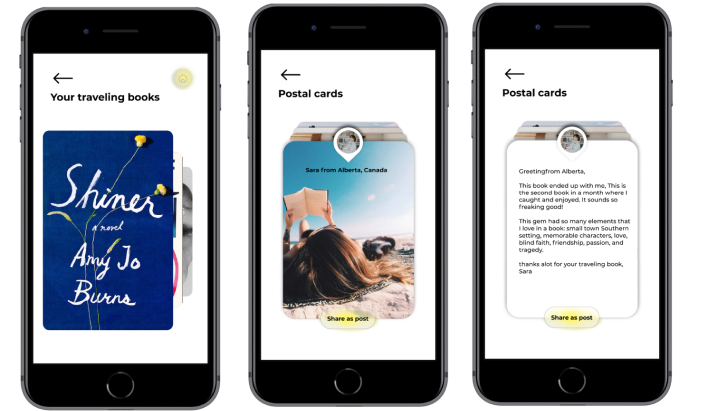CO-Library: Redefining
Reading Experiences with
Augmented Reality and
Collaborative Annotation

CO-Library: Redefining
Reading Experiences with
Augmented Reality and
Collaborative Annotation

The CO-Library project aimed to bridge the gap between print and digital reading materials by leveraging user preferences and functionality. This project was conducted in partnership with HGK, Basel. The primary goal was to develop an application that allows users to annotate and interact with both print and digital materials, providing a seamless and integrated reading experience.

CO-Library proves that through user-centered design and a focus on bridging the physical and digital realms, we can create entirely new reading experiences. By leveraging augmented reality and fostering collaborative annotation, we empower users to personalize their reading journeys and unlock deeper engagement with content.
Talayeh Dehghani

HGK, Basel, partnered on this project, focusing on fostering innovation in reading habits and providing tools that support diverse user preferences. The client aimed to enhance the reading experience through digital augmentation and collaborative tools.
Readers often express a preference for either print or digital books, but many use both depending on the context. The challenge was to create an application that supports this dual preference, allowing users to transition smoothly between print and digital formats. The solution needed to enhance accessibility and integrate reading habits to cater to the evolving needs of readers.
Role
2 UX designers
1 Design Lead
Throughout this project, we employed a data-driven process to ensure our design decisions were informed by user behavior and preferences. This approach not only strengthens the user experience but also allows for continuous improvement based on real-world data collected after the app's launch..

To understand user preferences and behaviors, we conducted diary studies involving 25 users, including students, lecturers, book readers, and specialists. Participants recorded their reading habits and the contexts in which they used print and digital materials.
Key questions included:
When and why do users engage with print versus digital books?
How do users choose content, and what motivates their reading habits?

We collected data from diary studies and used affinity diagrams to identify patterns and preferences. This process helped us pinpoint specific user needs and behaviors, shaping the application's design requirements.

To capture a comprehensive view of user behaviors and attitudes, we developed personas and empathy maps. These tools highlighted users' goals, pain points, and potential solutions, informing our design strategy.

We created four user journeys to explore different scenarios of how users interact with reading materials. This included:
Personal interaction with printed and digital content
Integration of digital annotations with print materials
Use of augmented reality to enhance reading experiences


The development phase involved several iterations to refine the user experience. Initial mockups and prototypes were created using Figma, focusing on a minimalist design and user-friendly interface. These prototypes underwent multiple rounds of user testing and feedback sessions to ensure they met user needs and expectations.

Conducted thorough usability tests with a broader user base. Collected feedback on overall satisfaction, ease of use, and functionality. Made final adjustments to address any remaining issues and ensure a seamless user experience.
The initial user testing received very positive feedback. Users found the gamified features engaging and motivating, particularly the digital postcards and book tracking features. We are confident that this redesigned app will attract a younger audience and reignite the joy of reading through a more interactive and social experience.

Based on the first round of testing we could validate the concept and identify the features that aims to solve the problem of ComX team. We conducted several rounds of testing before developing these features:
Augmented Reality Integration: Users would be able to point their camera at any page of a book to access digital content related to that specific page, such as podcasts, videos, PDFs, and annotations left by other users (educators, specialists, students, and artists).

Collaborative Annotation: Users would be able to annotate pages in their physical books and share these annotations with others.

Content Management System: A system would be implemented to allow users to upload and manage their own digital content related to specific books.

Personalization: Users would be able to create profiles and personalize their experience by selecting preferred content categories and creating boards to organize their findings.

The proposed solution was a collaborative learning platform called Co-library that integrates augmented reality to bridge the gap between physical and digital reading experiences. While the image doesn’t mention how the design was implemented or tested, it outlines a user-centered design process that incorporates user research to inform the features and functionalities of the application.